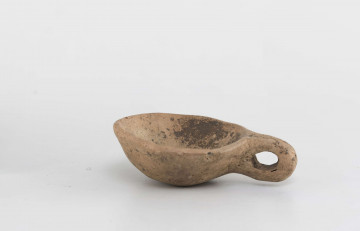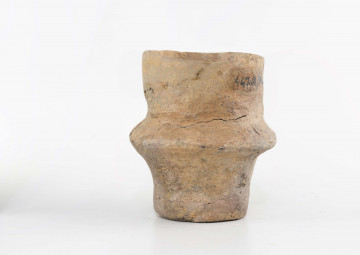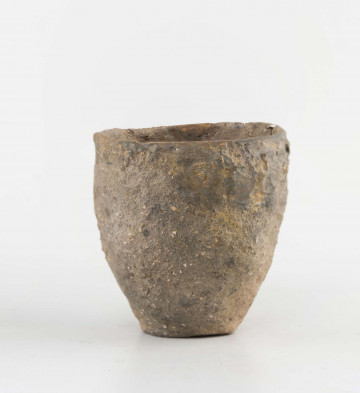
Scoop
National Museum in Lublin
Part of the collection: Archaeological monuments of the Lublin region
The described relic was discovered during archaeological research in Wołkowiany, Chełm district. It was there, in 1963, that archaeologists from the Lublin Museum explored a burial ground of the Lusatian culture (the population of which lived in the present-day area of the village of Wołkowiany about 3 thousand years ago).
A small pot (6.6 cm high and 4.5 cm in diameter) was found in one of the numerous graves discovered in the burial ground, where there was also another vessel, an urn, in which the burnt remains of the deceased were buried.
The S-shaped vessel was made by hand and it was done quite carelessly - both its walls and its edge are uneven.
The relic has survived to our times in quite a good condition, minor defects have been supplemented with plaster.
The S-shaped vessel presented here is described in archaeological literature as the so-called attachment. This is usually the name for smaller vessels, which were placed in the grave next to the urn containing the ashes of the deceased.
There are many interpretations among scholars as to why the attachment was placed in the grave. The dominant opinion is that the vessel could have been used during funeral rites. It was probably used as a vessel for consuming liquids in connection with ritual rites that took place in the burial ground, and then it was placed as a gift in the grave. There is also a possibility that liquid or food was placed in the vessel for the deceased during his further journey to the afterlife.
Author / creator
Dimensions
cały obiekt: height: 6,6 cm, diameter: 4,5 cm
Object type
dish
Technique
firing
Material
clay
Creation / finding place
Owner
The National Museum in Lublin
Identification number
Location / status

National Museum in Lublin

National Museum in Lublin

National Museum in Lublin
DISCOVER this TOPIC
National Museum in Lublin
DISCOVER this PATH
Educational path